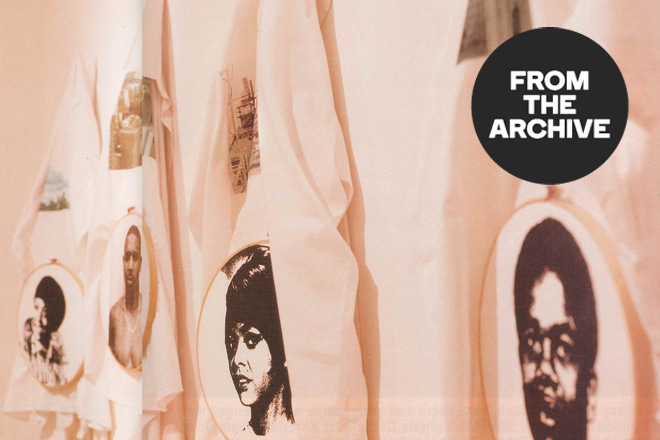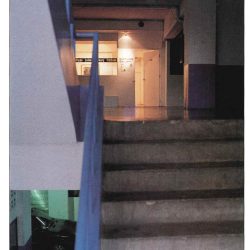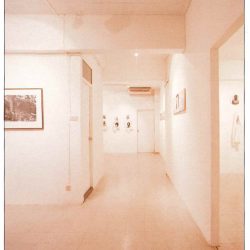
Phillipe Laleu returned to Bangkok once again, after having two previous exhibitions here, with a collection of new artworks entitled “Ordinary Fiction.” As a direct result of his experiences and observation in the American city of Detroit, his new work provoked some strong, and mostly empathetic reactions, when it was displayed at the Numthong Gallery. The overt themes of his work are still based around human relationships in an urban sprawl. And the way in which he has captured the decay, pollution, and industrialization of this huge metropolis, should remind us Bangkokians of our own backyard.

Originally published in art4d No.46, February, 1999
His photographs of Detroit’s urban blight, and portraits of its denziens, which are printed on the backs of white shirts, bear witness to the catastrophic deterioration of city life. Laleu’s work attempts to peer into these dark corners, and question what we have lost to this urbanization. These scenes are rendered in a way that is minimal enough so that it doesn’t dull their emotional impact. However, the artist also speculates, and masterfully at that, on how we can escape from this dead-end. In his previous exhibition – “A Piece of World – Bangkok” – he adroitly used such local materials as monks’ robes, which certainly impressed many Thai viewers. However, some art critics said that he should study more about Thai context. But in his show, Laleu has explored more universal issues, a kind of common ground upon which people from all walks of life can tread. It should also be noted that the ambience of the gallery which resembles the mise en scènes in Wong Kar-Wai’s films really helps to convey the sense of alienation found in his work.
In this way, we come to appreciate the fact that there is no difference between Detroit and Bangkok (or any other big, heartless city). It may sound like an urban myth, but these monster cities really do eat people’s souls. Laleu also looks at how the consumer lifestyle is devoid of any real spirit or content, and leaves its followers unfulfilled and hungry for more. In the end, his new work leaves one wondering about the exorbitant price we have to pay for competing in such a rat race.

Originally published in art4d No.46, February, 1999
This article was originally published in art4d No.46, February, 1999





